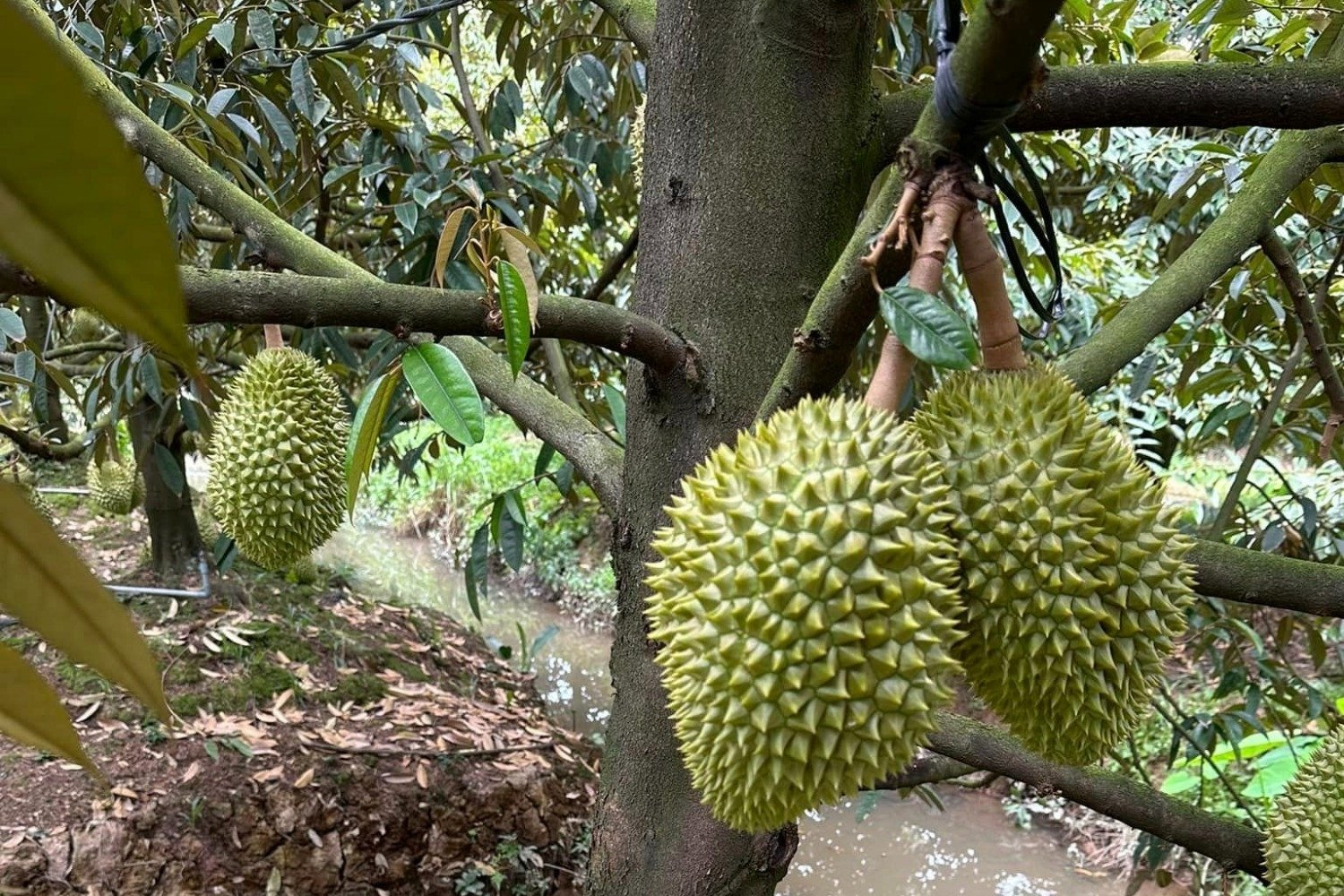Chinese consumers are so crazy about durian that they combine it with everything possible. This 'super recipe' helps Vietnamese businesses earn 3 billion USD in 2024 and almost catch up with their Thai competitors.
According to preliminary data from the General Department of Customs, it is estimated that in 2024, durian exports will earn about 3.3 billion USD, an increase of more than 1 billion USD compared to 2023, 7.8 times higher than the export turnover of 2022 (the first year that Vietnamese durian was officially exported to the Chinese market).
With the above figure, durian accounts for nearly 50% of the total export turnover of the entire fruit and vegetable industry in 2024, setting a new record.
Notably, durian export turnover in key markets has increased sharply. In the 11 months of 2024, our country's "king fruit" exports to China increased by 43% compared to the same period in 2023, to Thailand by 82%, and to Japan by 85%. In particular, durian exports to Cambodia increased dramatically by 139 times compared to the same period last year.
Currently, China is still the largest customer, accounting for over 90% of Vietnam's durian export turnover.
In China, middle-class consumers are tightening their purse strings, but their demand for durian continues to grow. In the first 11 months of 2024, China spent $6.83 billion to import 1.53 million tons of durian, up 9.4% in volume and 3.9% in value compared to the same period in 2023.
In the cities of this country of a billion people, durian has become a "trendy" choice for young consumers. The food service industry has responded with "durian + everything" promotions such as: durian-themed drinks, desserts, durian hotpot, buffets...
A durian chicken hotpot brand in Guangdong Province (China) has sold more than 2.22 million servings, and durian sandwiches have also attracted widespread attention on social media. Or a durian buffet restaurant in Shenzhen offers a menu with more than 200 dishes containing durian, priced at 27 USD/serving.
Thanks to China's "super formula" for processing durian into hundreds of different dishes, Vietnamese businesses are expected to earn nearly 3 billion USD from this market in 2024.
According to statistics from the Chinese customs agency, by the end of November 2024, China had imported about 720,660 tons of durian from Vietnam, worth over 2.86 billion USD. Compared to the same period last year, durian imports from Vietnam increased sharply by 50.2% in volume and 38.2% in value.
Accordingly, Vietnam's durian market share accounts for 47.09% of China's total imports during this period, while in the same period last year it was only 34.3%. That is, our country's durian market share is about to catch up with its rival Thailand (52.03%) in the Chinese market.
Currently, China accounts for 91% of global durian demand. Durian is increasingly consumed by people, from fresh durian, frozen durian and processed by the industry into many products such as cakes, candies, foods, drinks, etc. However, only less than 1% of the people of this country have access to durian.
This shows that the potential for exporting durian to China is still very large. This is also an opportunity for Vietnam to increase its market share in the billion-people market.
Mr. Nguyen Thanh Binh - Chairman of the Vietnam Fruit and Vegetable Association (Vinafruit) - said that our country's durian output has increased sharply. Many durian areas planted 5-6 years ago will be harvested by 2024.
According to a report by the Ministry of Agriculture and Rural Development, Vietnam's durian output will continue to increase sharply in 2024, reaching 1.45 million tons.
Durian has a good harvest, good prices, and is popular in the market, helping many farmers grow this "king of fruits" and earn big profits.
In 2025, durian exports are expected to continue to grow as China opens its market to new products such as durian puree and durian pulp. These products will bring higher added value than fresh durian, helping farmers make the most of raw materials.
However, to maintain growth momentum and penetrate deeper into the Chinese market, Mr. Binh said that there should be national standards for key fruit and vegetable products.
For example, the national standard for durian has a strict process for harvesting, post-harvest preservation, transportation and processing. According to him, without specific standards, farmers can unintentionally reduce product quality, the shell is scratched, reducing storage time.
He also pointed out that due to growing in different ecological zones, the quality of the final product can also be different. This helps diversify products and markets, but also raises issues of quality control.
Therefore, quality standards will help parties have a basis for joint production, harvesting, and processing. This is also a premise for ministries and sectors to confidently continue negotiating to open the market, while supporting the development of growing area codes and packaging facility codes, Mr. Binh emphasized.

Source: https://vietnamnet.vn/trung-quoc-co-sieu-cong-thuc-sau-rieng-viet-nam-than-toc-dua-voi-thai-lan-2360618.html





























































































![[Infographic] In 2025, 47 products will achieve national OCOP](https://vphoto.vietnam.vn/thumb/402x226/vietnam/resource/IMAGE/2025/7/16/5d672398b0744db3ab920e05db8e5b7d)





Comment (0)